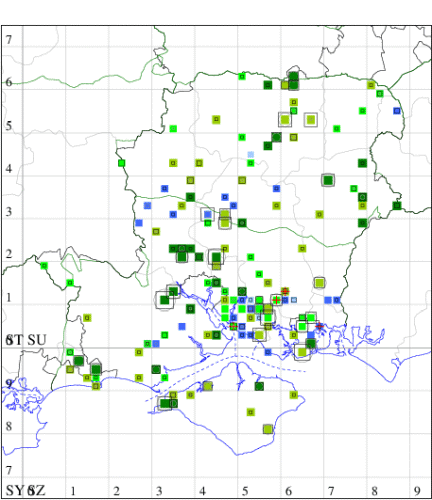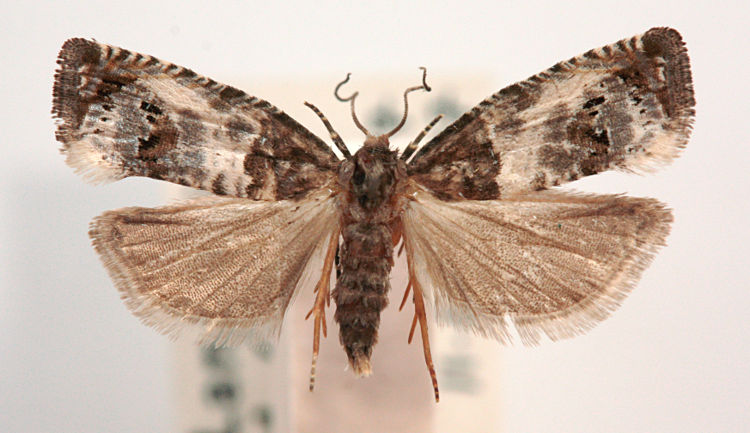Notocelia rosaecolana
Checklist Number49.297 [B&F: 1177]
Verification
Record will require further evidence, at least a good photograph, unless CMR is aware recorder has confidence in identification
Classification
| Family: | Tortricidae |
| Subfamily: | Olethreutinae |
| Genus: | Notocelia |
| Species: | rosaecolana |
| Authority: | (Doubleday, 1850) |
Common in gardens and hedgerows throughout much of Britain and western Ireland. In Hampshire widespread and fairly common. There have been very few recent records from the Isle of Wight. Wingspan 16-20 mm. This is one of three closely related and difficult to separate species (see E. trimaculana and E. roborana). A generally larger species than E. trimaculana with the forewing somewhat broader and the costa more strongly curved; the general coloration of the forewing is lighter while the costal strigulae are finer and more oblique [Bradley]. Larva feeds on Wild Rose and Cultivated Rose, living within a spun or rolled leaf, over-wintering as an egg.


The abundance in each month is indicated as follows:
 No records
No records Very occasional
Very occasional Irregular
Irregular Uncommon
Uncommon Off-peak, but not unusual
Off-peak, but not unusual Off-peak, but not unusual
Off-peak, but not unusual Main flight time
Main flight time| J | F | M | A | M | J | J | A | S | O | N | D | |
|---|---|---|---|---|---|---|---|---|---|---|---|---|
| Adult |  |  |  |  |  |  |  |  |  |  |  |  |
| Larval |  |  |  |  |  |  |  |  |  |  |  |  |



.jpg)
